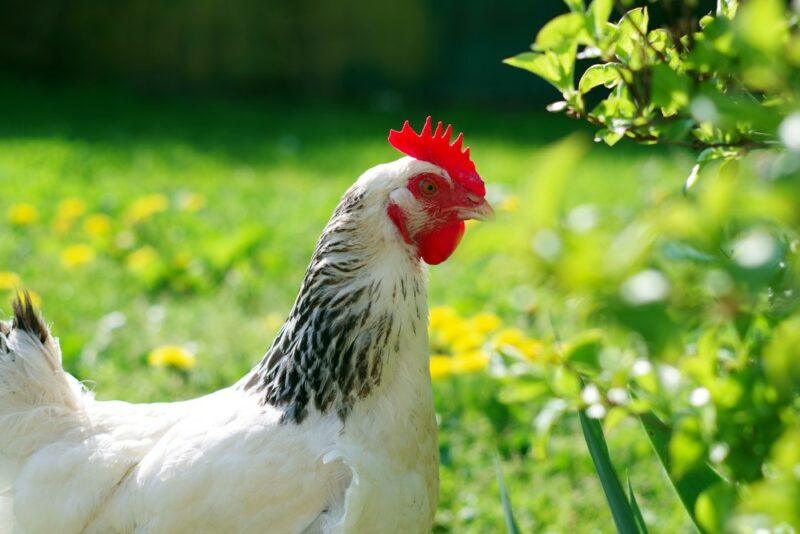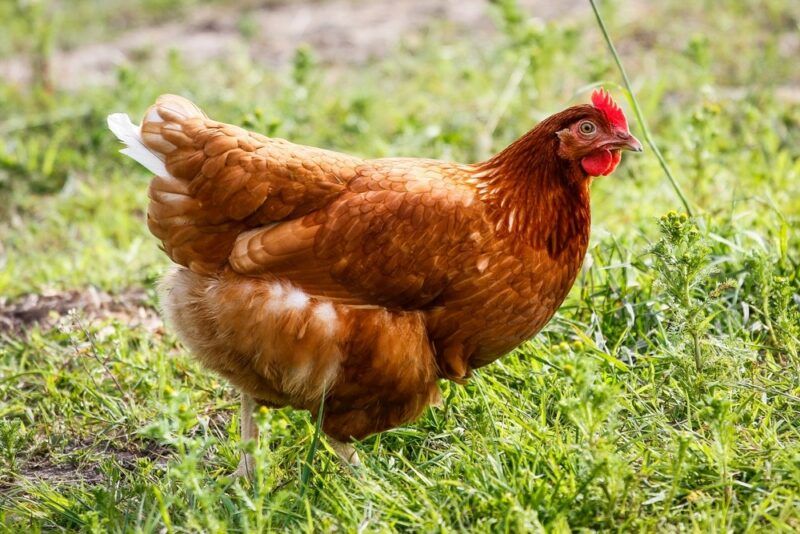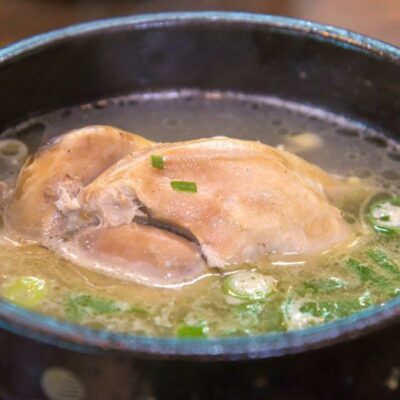
Breed makes a huge difference when raising chickens in your backyard or homestead. Some breeds are easy to work with and are prolific egg layers, while others are better for meat instead. If you’re most interested in eggs, you’re going to want the best laying hens.
Thankfully, there are plenty of exceptional breeds out there, including the Rhode Island Red, Leghorn, Plymouth Rock, Australorp, and many more. In this post, we’re taking a close look at these breeds and what they have to offer.
To do so, we’re going beyond just the egg production numbers. We’ll also talk about the temperament of the chickens, the types of eggs they lay, and any other interesting features.
One quick note before we begin – the quoted number of eggs per year is just an average. Production may vary between individual birds, decreases as the chicken ages, and may be influenced by external factors, like the weather and how you care for the birds.
P.S. If you find you’re sometimes getting too many eggs at once, you can always freeze some for later use.
Best Laying Hens
Rhode Island Red

Eggs per year: 200 to 300
Rhode Island Reds are one of the most famous choices for backyard chickens. It’s easy to see why too, as they average between 200 and 300 eggs per year. The eggs are normally light brown, ranging from medium to large.
What’s more, this breed can start laying from 16 weeks of age. That’s earlier than many other breeds.
Rhode Island Reds are often called a dual purpose breed. This means that they can be raised for eggs or for meat, making them a versatile addition to your backyard. Plus, this is a resilient species that’s easy to care for.
Leghorn

Eggs per year: 250
Leghorn chickens have many of the same features as Rhode Island Reds. In particular, they’re easy to care for and lay an abundant number of large eggs. Seriously, 250 eggs per year isn’t shabby at all.
That said, Leghorns aren’t the best pet chicken, as they’re shy, independent, and aren’t easily tamed. Their independent nature can make them a poor choice for beginners as well.
Leghorns come in many varieties, which feature different plumage colors. While these varieties are all excellent layers, White Leghorns are the most common and popular choice. These white chickens have a large red comb (just like the character Foghorn Leghorn).
Plymouth Rock

Eggs per year: 200 to 250
Plymouth Rocks are another impressive breed, often laying between 200 and 250 eggs every year. While their egg production decreases after the third year or so, the hens keep laying eggs for a full ten years. This is seriously impressive. Most other hens only lay eggs for eight years at the most.
That said, the eggs are relatively small compared to other breeds.
There are multiple varieties of this breed too, including Barred, White, and Partridge. These all have similar characteristics, so you can choose whichever you prefer.
Sussex

Eggs per year: 180 to 250
Some reports suggest that Sussex chickens produce between 180 to 200 eggs per year. Others get closer to 350 eggs per year, which is a tremendous range.
There are many beautiful varieties of these hens too, including Speckled, Buff, and White. The birds are also somewhat deceptive, as they’re large, yet are still docile and make good pets.
The Sussex is also a dual-purpose breed that produces surprisingly tasty meat.
Buff Orpington

Eggs per year: 180
At 180 eggs per year, Buff Orpington hens aren’t as prolific at laying eggs, but they still give you a decent amount. They are also a very tame breed and are absolutely perfect for backyard chicken keeping. It’s surprisingly easy to teach them to eat from your hand.
The chickens look stunning too, with a thick layer of golden-yellow feathers. They’re certainly to brighten up your day.
The lower egg number is partly because Buff Orpingtons tend to be broody. This is frustrating if you want the most possible eggs, but their broody nature is perfect if you’re hoping to raise chicks.
Australorp

Eggs per year: 250 to 300
Australorps have a lot going for them. Not only do they produce 250 to 300 eggs per year, but they’re also gentle and social. This makes them an excellent chicken for families and when you’re just getting started raising chickens.
Australorps are another dual purpose chicken. So you can raise them either for eggs or for their meat.
Black Star

Eggs per year: 300
Black Star chickens are a hybrid breed that produces roughly 300 brown eggs per year. They’re slow to go broody, which helps to keep the egg production high.
The breed is produced from a cross between a Barred Plymouth Rock hen, plus either a Rhode Island rooster or a New Hampshire rooster. This makes the breed hard to obtain yourself. You may need to turn to a local breeder instead.
Black Star chickens are a resilient breed, but they’re still a hybrid, so they are more susceptible to some health issues. Also, because they’re a hybrid, you can’t simply breed Black Star chickens to get more. The chicks will end up with a different set of characteristics.
Red Star

Eggs per year: 280 to 300
Then we have the Red Star breed. This hybrid was specifically developed for egg production, so it’s not surprising that it is an impressive layer. You might get as many as 300 large eggs per year from this breed.
As always, egg production decreases as the chickens age. However, the extent of this reduction isn’t clear.
Isa Brown

Eggs per year: 300 to 350
This hybrid breed was developed for producing many brown eggs and they certainly live up to their claim. Interestingly, this breed was developed commercially and the genetic history hasn’t been revealed. There’s even a copyright on the name.
Beyond this, Isa Brown hens are docile and have a lovely temperament. This makes them perfect for raising in the backyard. Even your kids will love them.
Golden Comet

Eggs per year: 250 to 300 (perhaps up to 330 eggs)
This is another commercially produced hybrid breed that is now raised on many homesteads and backyards. It’s an excellent breed for beginners, especially as they’re also kid friendly.
These are small chickens though, so they’re not a great choice for meat. They’re also a sex link hybrid. This means you can easily tell the sex of chicks as soon as they are born.
Lohmann Brown

Eggs per year: 280
Lohmann Brown chickens don’t look exciting, but they’re still excellent for eggs – especially as their eggs are quite large. They’re another friendly breed and have no problems being around children.
The breed itself is thought to have come from Germany, but you can now find the chickens in other places, including the United States.
Easter Egger

Eggs per year: 250
Easter Eggers are a hybrid breed and are most famous for producing brightly colored eggs, often ranging from a bright light blue to a green-blue color. The hens are good layers too, often setting around 250 eggs per year.
The hens themselves come in different colors too, including white, brown, and black. You may even see multiple feather colors on the same chicken.
Despite common assumptions, each chicken just lays a single egg color. To get a variety of blue toned eggs, you’ll need multiple Easter Egger hens.
Ameraucana

Eggs per year: 200
Like the Easter Egger, Ameraucana chickens lay blue shelled eggs. The production is a little lower here, at 200 eggs per year. The chickens tolerate children and other animals well, although they’re not fond of being picked up.
The breed fares reasonably well when confined, but thrives if allowed to range free regularly.
Many writers say that Easter Egger and Ameraucana breeds are the same, but that’s not the case. Not only are they distinct breeds, but Easter Egger is a hybrid, while Ameraucanas are a heritage breed instead.
Austra White

Eggs per year: 250
Finally, we have Austra White chickens. These are hybrid breed – this time created from Black Australorps and White Leghorns. They’re generally white, as the name suggests, although they do have some dark black markings.
Interestingly, these chickens are calmer and more docile than White Leghorns, which can make them easier to raise.
Which Chickens Lay Eggs The Soonest?
Chickens often lay eggs when they’re between 20 and 22 weeks of age. However, a few breeds can lay eggs by the 16-week mark instead. Leghorns, Rhode Island Reds, and Australorps all follow this pattern.
The exact time will vary between individual chickens. Time of the year plays a factor too. If you get your chickens later in the year, they might not start laying eggs until after winter.
Should You Choose Heritage Or Hybrid Chickens?
Chicken breeds can be categorized as heritage or hybrid. Some of the most famous heritage breeds include Australorp, Plymouth Rock, and Rhode Island Red.
Heritage chickens are pure bred and tend to have better genetics. As a result, they typically live longer than hybrid breeds, are less prone to disease, and are often self-sufficient.
Hybrid chickens have been selectively bred for particular characteristics. Some are exceptional at producing eggs and will often outperform heritage breeds. Many are small bodied, which is fantastic if you are short on space.
However, hybrid chickens can be prone to disease and other complications. Some are also trickier to raise than heritage chickens. Hybrid chickens also need to be purchased every season. Any chicks you breed won’t be the same as their parents and may not have desirable characteristics.
If you want the most eggs possible, then hybrid chickens are often the way to go. But, if you want a low stress experience, you may have more luck with heritage chickens.
How To Get The Most Eggs From Your Hens
The breeds on this list can all lay a decent number of eggs every year. However, they’re not guaranteed to do so. The following approaches help to optimize the egg output of your chickens.
Remember that chickens always lay fewer eggs as they age. This is true regardless of the breed and there’s nothing you can do about this.
Ensure They Get Enough Protein
Chickens need a decent amount of quality protein each day to lay eggs. You’re often looking at around 17 to 20 grams of protein per day.
Of course, the rest of their diet matters too. Chickens need to be getting sufficient nutrients, otherwise their egg production will be compromised.
Provide Plenty Of Light
Hens ideally need 14 hours of sunlight a day to produce eggs. Providing this often means letting the chickens out of the coop early in the morning.
Even then, you might need to add light into your coop to ensure that your chickens get enough light. But, do some research before taking this approach, particularly in winter. It may be wiser to allow egg production to naturally decrease over the cooler season, so that your hens can rest and their bodies can recover.
Be Cautious About Adding Or Removing Chickens
Flock dynamics can play a role in how safe chickens feel and when they lay eggs. Adding or removing chickens changes these dynamics. Doing so at the wrong time could mean less egg production for a while.
Provide Good Nesting Conditions
Nesting conditions play a crucial role. You’ll want to have multiple nesting boxes that are in a dark environment and are regularly cleaned.
Removing eggs from the nesting box helps too, as multiple eggs in a box may dissuade hens from laying. That said, you can leave a fake egg in nesting boxes to encourage hens to use them.
Offering separate roosting spots as well. This way hens aren’t trying to sleep and nest in the same spot.
Make Sure Their Needs Are Met
Finally, be sure to research the breed of chicken you’re raising and be sure to match their needs. For example, some of the chickens on this list do well with confinement, while others should be able to range freely instead.
Final Thoughts
As you can see, there are many excellent chicken breeds for eggs. We haven’t even covered them all. Other less popular varieties include Barnevelder, Wyandotte, and Minorca.
What’s the best breed? Leghorn, Rhode Island Red, and Sussex chickens are some of the most popular, but this doesn’t mean you need to rely on them. It’s more important to find a breed that matches your needs and environment.
Sometimes this will mean looking for a docile and family friendly breed. Other times, you may need a breed that does well with confinement instead.

















 22 Best Meat Chickens You Can Raise Yourself
22 Best Meat Chickens You Can Raise Yourself
Leave a Reply